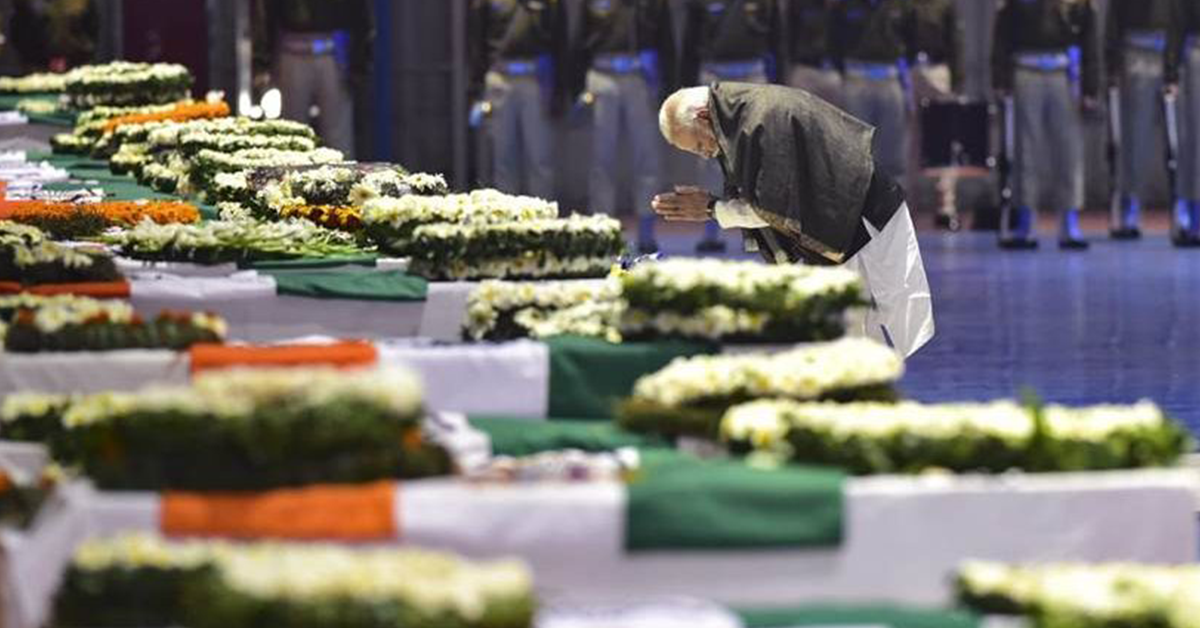HMV, His Master’s Voice points towards an ecosystem which creates narratives for their political masters — leaders of Sharad Pawar’s NCP. The HMVs have a single-point agenda: to discredit Devendra Fadnavis at every forum, regional and national.
Global Hunger Index: The Thirst for Publicity
Global Hunger Index assessment does not reflect the ground reality and is not worthy of consideration. It is, in fact, a hallmark of misinformation and false propaganda.
Read Time: 9 minutes
click play to listen to the article
Introduction:
During the last 12 months, was there a time when, because of lack of money or other resources: You were worried you would not have enough food to eat? You ate less than you thought you should?
The Global Hunger Index Report 2022 released by Concern Worldwide and Welt Hunger Hilfe, Non-Government Organisations from Ireland and Germany respectively, rely on opinions to questions such as these as indicators of hunger. The indicators termed as Global Hunger Index (GHI), place India (107/121 countries) much behind its neighbouring countries — Pakistan (99), Bangladesh (84), Nepal (81) and Sri Lanka (64). The Government of India, in an official statement, called the report “misinformation” and part of a “consistent effort’’ to “taint India’s image”. The index “suffers from serious methodological issues”. Calling the report “disconnected from reality”, the Ministry of External Affairs (MEA) said it chooses to “deliberately ignore efforts made by the government to ensure food security” during the pandemic.
Methodology:
1. Undernourishment: calculated by the share of the population whose caloric intake is less than 1800 Kcal/capita/day;
2. Child Wasting: calculated by the share of children under the age of five who have low weight for their height;
3. Child Stunting: calculated by the share of children under the age of five who have low height for their age;
4. Child Mortality: calculated by the mortality rate of children under the age of five.
Flawed Logic:
Three out of the four indicators used for the calculation of the index are related to health and not hunger. The indicators are restricted to children aged below 5 years of age. The fourth — Prevalence of Undernourishment (PoU) is based on an opinion poll conducted on a very small sample size of 3000 (India’s population is 138 crores). Three out of the four indicators constitute only 11.5% of the total population in India. Also, undernourished population is calculated as inclusive of undernutrition in children. With this calculation, GHI is clearly assigning 70.5% weightage to children who are below five — that constitutes less share, and then assigning 29.5% weightage to population who is above five, which holds 81.5% of the total population. This methodology also ignores genetic factors, wherein international norms on stunting and wasting may not be applicable to India. In addition, there is hardly any evidence that the fourth indicator, namely, child mortality is an outcome of hunger.
Prevalence of Undernourishment (PoU):
One of the components to derive PoU is sourced from the Food and Agriculture Organization of the United Nations’ (FAO). FAO assumes population having less than the FAO Minimum Dietary Energy Requirement (MDER) of 1800 Kcal/capita/day intake as undernourished. This criterion itself is problematic as energy requirements of individuals vary according to age, sex, physical activity and body size. It is therefore incorrect to compare the dietary intake of an individual with an average dietary requirement. Moreover, as per the data from National Nutrition Monitoring Bureau (NNMB) survey, a substantial proportion of the Indian population, who consume less than the FAO MDER, is ~39% overweight, while ~12% is obese. This is a direct contrast to the logic of calculating PoU.
Strangely, while the FAO relies on data provided by national governments for most countries, for India, it relies on data collated from an opinion poll whose sample size was 3000 in 2021 and 6350 in 2022.
This matter was taken up with the FAO, as the statistical output based on incorrect inferences was bound to be factually incorrect. An assurance from the FAO was forthcoming, however, Global Hunger Index report, irrespective of such factual considerations was nevertheless published. This is not only wrong and unethical, but it also reeks of obvious bias.
Ironically, the per capita dietary energy supply in India has been increasing year-on-year. Under such circumstances, there is absolutely no reason why the country’s undernourishment levels should increase.
Questionable Sources:
The Global Hunger Index needs to be challenged for many reasons including reliance on outdated data, flawed methodology and dubious sources. Primary example can be that of China, whose score was 13.3 in 2000, and has made a spectacular improvement since then — its score is now less than 5.
In 2020, senior officials of the World Bank had ensured that the data from China for Ease of Doing Business were fudged in order to improve its rating. They ordered manipulation of data to reverse China’s fall from 78 to 85 in the rankings. WHO’s involvement in giving a free pass to China on Covid-19 virus is well known. GHI data comes from various UN and other multilateral agencies like the WHO, World Bank, UNICEF, FAO and from “authors’ estimates”. Considering the above given examples, how reliable is the data collected by the WHO and used by those who finalised the GHI rankings?
The GHI report, which seeks to run down India, is in line with some other global institutions like Press Freedom Index prepared by the Paris-based Reporters Without Borders (RSF), and the Democracy Report 2020 produced by the Swedish agency V-Dem. The RSF report had claimed that there was better press freedom in many countries, which are in reality devoid of the basic fundamentals of democracy, than in India. Maldives, for example, where only Muslims can be citizens, and where the Sharia law is supreme, is supposedly a better “democracy”, and a nation with better press freedom than India. There are dozens of such examples in these reports, which clearly establish that they are agenda-driven.
Government’s Initiatives:
The Government of India is running the largest food security programme in the world. During the outbreak of COVID-19, the Modi Government in March 2020 announced the distribution of additional free-of-cost foodgrains (Rice/Wheat) to about 80 Crore National Food Security Act (NFSA) beneficiaries at the scale of 5 Kg per person per month under the PM Garib Kalyan Anna Yojana (PM-GKAY), over and above the regular monthly NFSA foodgrains i.e., regular entitlements of their ration cards. Under Anganwadi Services, supplementary nutrition was provided to approximately 7.71 crore children up to the age of 6 years and to 1.78 crore pregnant women and lactating mothers. Under Pradhan Mantri Matru Vandana Yojna, more than 1.5 Crore registered women were provided Rs 5000/- on the birth of their first child for wage support and nutritious food during pregnancy and post-delivery period.
As per the National Family Health Survey (NFHS) report, Child Stunting in the country has decreased from 38.4 percent (NFHS-4, 2015-16) to 35.5 percent (NFHS-5, 2019-21) and Child Wasting has decreased from 21.0 percent (NFHS-4, 2015-16) to 19.3 percent (NFHS-5, 2019-21). Further, the percentage of underweight children has gone down from 35.8 percent (NFHS-4, 2015-16) to 32.1 percent (NFHS-5, 2019-21).
GHI 2022 also goes against the findings of a working paper of the International Monetary Fund (IMF) that noted Pradhan Mantri Garib Kalyan Yojana (PMGKAY), which provides free foodgrains to poor people, played a key role in keeping extreme poverty in India at the lowest level of 0.8 per cent during the COVID-19 pandemic.
Conclusion:
The GHI exaggerates the measure of hunger, lacks statistical vigour, and has a problem on multiple counts. Its assessment does not reflect the ground reality and is not worthy of consideration. It is, in fact, a hallmark of misinformation and false propaganda. The time has therefore come to call out the so-called “global” reports and scrutinize the work of world bodies.
Tags: Truth Unveiled, Lutyens
Share this article:
Leave a Comment
Recommended For You
Speaking out against Nehru's lingering influence is essential. His reign planted the seeds of corruption, with entitlement overshadowing merit and dynasty prevailing over democracy. The parallel between Nehru's era and Sonia-Rahul Gandhi's is uncanny. The thread of corruption persists, a sinister legacy passed through generations.
To allege that the Modi government is indulging in giving plum postings as quid pro quo is being too generous with creativity.
India is in the early days of its most vicious election campaign. While we may see the opposition and its darbaris, just like when the Pulwama attack took place, speaking in one voice, it won’t be long, we’ll see them resorting to questioning and doubting today’s air strikes.





